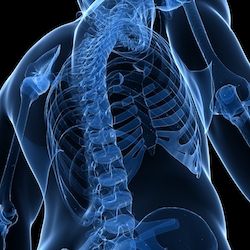Genotyping could help minimize the need for liver transplants. Winston Dunn, MD associate professor at the University of Kansas Medical Center. Dunn, the study lead author, presented evidence at the annual Digestive Disease Week® (DDW) 2017 conference, showing that genotyping of patients with advanced cirrhosis from hepatitis C virus could help health-care professionals predict the likelihood of improvement after successful hepatitis C treatment. In turn, this could minimize the need for liver transplants.
Our findings further the move toward precision medicine, because we can potentially use a person’s genetic makeup to identify individuals who can benefit most from hepatitis C treatment, even at a very late stage in the progression of their liver disease,” said Winston Dunn, MD, the study’s lead author and associate professor at the University of Kansas Medical Center.
It is widely accepted that hepatitis C virus (HCV) can be cured by direct-acting antiviral agents. However, there are patients with more serious decompensated cirrhosis, or liver damage, who fail to improve or experience further deterioration even after treatment. The primary features of decompensated cirrhosis include confusion, swelling and jaundice.
How Genotyping Identifies Risk Factors
Dr. Dunn and his team focused on the Rs738409 single nucleotide polymorphism (RSP), which is a variation in a single base pair of DNA in the PNPLA3 gene; patients possess one of three genotypes — CC, CG, or GG. The PNPLA3 gene is the most important genetic risk factor for both alcoholic liver disease and nonalcoholic fatty liver disease.
The team followed 32 patients with decompensated cirrhosis at the University of Kansas Medical Center who had initially achieved sustained virologic response (SVR). They had become essentially virus-free, using interferon-free direct-acting antiviral medications, such as sofosbuvir/ledipasvir and sofosbuvir/simeprevir.
Twelve to 48 weeks after SVR, researchers tracked changes in two measures that assess the severity of chronic liver disease, the Model for End-Stage Liver Disease (MELD) and the Child-Pugh (CPT) scores.
Following the antiviral treatment, researchers found that five of the 16 patients with the CG or GG genotypes experienced worsened MELD or CPT scores. In comparison, only one of the patients with the CC genotype worsened in either CPT or MELD scores.
“These findings suggest screening for the Rs738409 CG and GG genotypes in hepatitis C patients with decompensated cirrhosis can help to identify individuals who are less likely to recover after achieving a ‘cure’ of their hepatitis C,” added Dr. Dunn. “Until now, we have not had a method to distinguish between the individuals who would recover given equal severity in baseline disease.”
As next steps, Dr. Dunn noted that his team will examine the underlying mechanisms that may explain why the presence of these genotypes lead to worsened health outcomes. They’ll study how fatty liver and insulin resistance impact clinical recovery after treatment with direct-acting antiviral medications, and if these findings correspond to that of the genetic marker for fatty liver (Rs738409).





